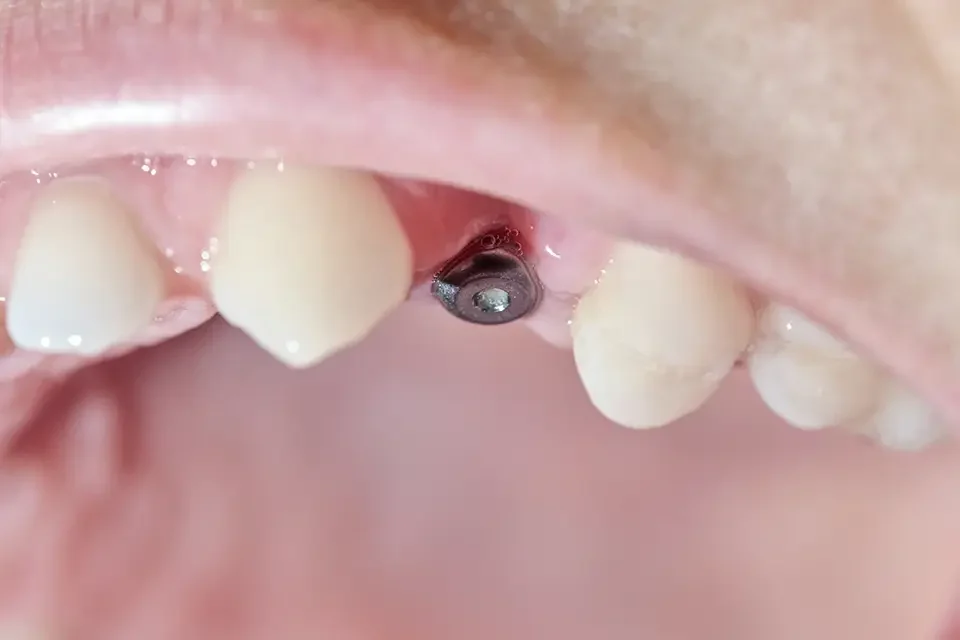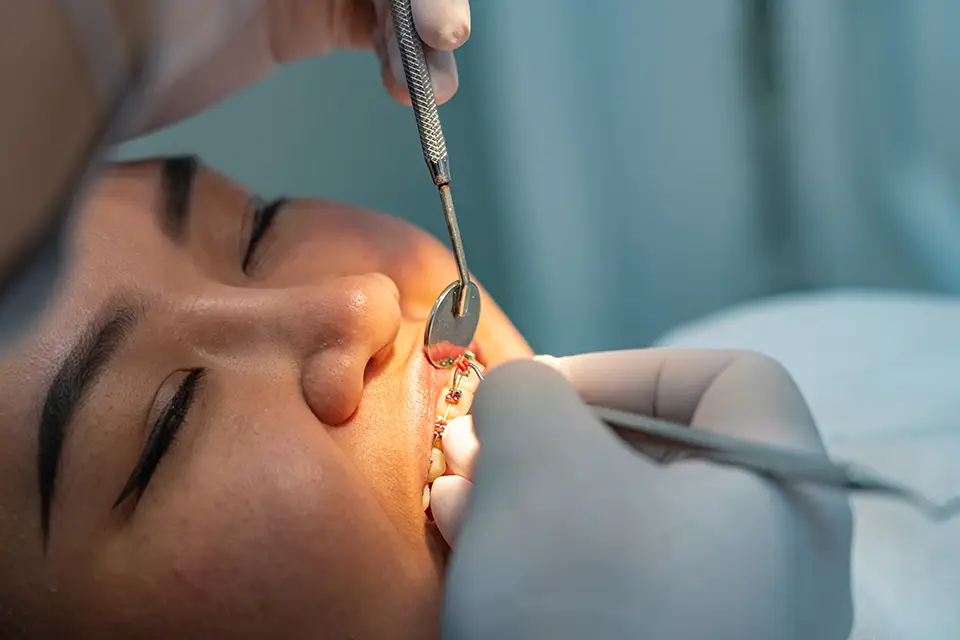A gap changes more than your smile—it can affect chewing, speech, and how nearby teeth shift over time. If you’ve been asking how can you replace a missing tooth, you’re already thinking in the right direction. At Sunshine Dentistry in Richmond Hill, Ontario, we match treatment to your health, bite, budget, and timeline. This guide answers how can you replace a missing tooth with clear, practical choices—from single teeth to full-arch solutions—plus costs, timelines, and upkeep.
How Can You Replace a Missing Tooth: Begin with Health, Bone, and Bite
Before we talk materials, we steady the foundation. Healthy gums, adequate bone, and a stable bite make every option more predictable.
- Gum health first: Calm, plaque-free tissues help any restoration last.
- Bone and spacing assessment: X-rays or 3D scans confirm bone volume and root positions.
- Bite forces and habits: Clenching, grinding, or deep bites shape material choices and design.
- Timeline and goals: A quick fix for now or a long-term solution? Real life matters—travel, events, budget.
A short assessment turns “choices” into a clear plan for how can you replace a missing tooth without surprises.
Single-Tooth Implants: A Natural-Feeling Answer
When patients ask how can you replace a missing tooth with something fixed and strong, implants lead the conversation.
How it works
A small biocompatible post is placed in the bone to act like a root. After healing (osseointegration), a custom crown is attached. Neighbouring teeth stay untouched, and the bite often feels closest to a natural tooth.
When it shines
- You want fixed strength for everyday chewing.
- Adjacent teeth are healthy, and you’d rather not reshape them.
- You’re comfortable with a multi-stage timeline for a long-term result.
Considerations
- Adequate bone is required; bone grafting can help when volume is low.
- Up-front cost is higher than some alternatives, but longevity is excellent with good care.

Traditional Bridges: Fixed, Fast, and Time-Tested
If you’re weighing how can you replace a missing tooth quickly, a bridge can be completed in weeks. A false tooth (pontic) anchors to crowns on the teeth next door.
Why choose it
- Speed: Typically finished over two visits.
- Fixed feel: Nothing to remove at night; hygiene uses floss threaders under the pontic.
- Smart when neighbours need crowns anyway.
Trade-offs
- Requires reshaping the support teeth—even if they were previously untouched.
- Cleaning under the pontic takes a little practice.
Adhesive (Maryland) Bridges: Minimal Drilling, Best for Front Teeth
For patients asking how can you replace a missing tooth in the smile zone with minimal prep, adhesive bridges bond a replacement tooth to one or both neighbours with small “wings.”
Best fit
- Front-tooth gaps with lighter bite forces.
- Younger patients or anyone not ready for an implant.
- Budget-conscious plans that avoid a removable option.
Limits
- Not ideal for heavy grinders or deep bites.
- Wings can de-bond under high load and may need re-cementing.
Removable Partial Dentures: Budget-Friendly and Adaptable
When cost and flexibility drive how can you replace a missing tooth, a partial denture fills one or more spaces and clips to existing teeth.
Upside
- A cost-effective way to restore multiple gaps at once.
- Fast to make and easy to adjust if needs change.
Downside
- Removable: You’ll take it out for cleaning and overnight.
- Bulk and movement: Even well-fitting partials can feel less stable than fixed options.
- Clasp visibility: In some smiles, metal clasps can show.
Full-Arch Solutions: From Conventional Dentures to Implant-Retained Smiles
If you’re considering how can you replace a missing tooth when many are already gone, full-arch choices keep life practical.
Conventional full denture
- Most affordable path to a complete smile.
- Relies on fit and suction; lower dentures can feel looser than uppers.
Implant-retained denture (2–4 implants)
- “Snaps” into place for much better stability.
- Removable for cleaning; markedly stronger chewing than a conventional denture.
Fixed full-arch (All-on-X style)
- A screw-retained bridge on multiple implants.
- Stays in—your dental professional removes it for maintenance.
- Highest stability and most “natural” chewing of the full-arch options.
How Can You Replace a Missing Tooth: Costs, Timelines, and Maintenance
There isn’t a single price or schedule; the right answer to how can you replace a missing tooth depends on biology, scope, and staging.
- Implant + crown: Higher upfront cost; staged over several months; excellent longevity and bone preservation.
- Traditional bridge: Mid-range cost; done in weeks; reshapes neighbouring teeth.
- Adhesive bridge: Lower to mid-range; quick; ideal for select front-tooth cases.
- Partial denture: Most budget-friendly; fast; removable; periodic adjustments expected.
- Implant-retained or fixed full-arch: Higher investment; stability and chewing power scale with implant count.
Maintenance that protects your investment
- Daily cleaning: Threaders or interdental brushes under bridges; implant-specific floss around abutments.
- Nightguard if you clench or grind—whatever option you choose.
- Regular reviews: Hygiene visits keep tissues calm and catch small issues early.
How Can You Replace a Missing Tooth: Decision Guide That Matches Real Life
- Want fixed strength and a “natural” feel? Implant and crown.
- Need fixed but faster than an implant? Traditional bridge.
- Front tooth, minimal drilling, not ready for implants? Adhesive bridge.
- Multiple spaces on a budget? Partial denture now, with a path to implants later.
- Full arch that stays put? Fixed full-arch on implants.
- Full arch that’s stable yet easy to clean? Implant-retained denture.
Bring your priorities—budget, aesthetics, timeline—and we’ll map them to the right option.

How Sunshine Dentistry Personalizes the Plan
- Listen first: What bothers you most? What does “natural” look like to you?
- Show, don’t just tell: Photos and scans so choices are easy to compare.
- Two or three credible routes: Clear steps, timeframes, and day-to-day realities for each option.
- Steady follow-through: Short appointments if you prefer, clear aftercare, quick adjustments if something feels off.
You leave with a plan you can read—and a result designed to last.
Conclusion
If you’re still wondering how can you replace a missing tooth, the most helpful move is a short, focused consultation. We’ll review your scan, outline a few credible routes—from conservative to comprehensive—and help you choose the option that fits your goals, calendar, and budget.
Ready to explore your choices? Book a visit with Sunshine Dentistry in Richmond Hill, Ontario. Let’s design a replacement that looks natural, chews comfortably, and holds up in real life.
FAQs — How Can You Replace a Missing Tooth?
Is an implant always the best answer to replace a missing tooth?
Not always. Implants are excellent when bone and health allow, and you want a fixed, long-term result. If neighbouring teeth already need crowns, a bridge can be the smarter play.
How soon after extraction can you start replacing a missing tooth?
Sometimes immediately with careful planning; sometimes after a healing period. If infection or bone loss is present, we may graft first to build a stronger foundation.
What if there isn't enough bone when deciding to replace a missing tooth?
Bone grafting, sinus lifts (for upper molars), or strategic implant positioning can help. Imaging confirms the right path before we recommend anything.



